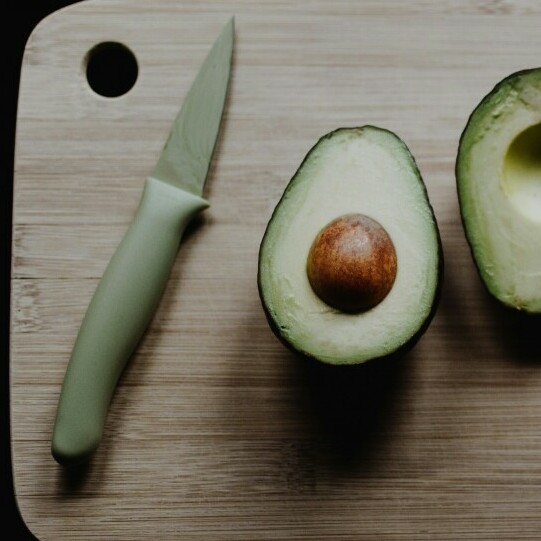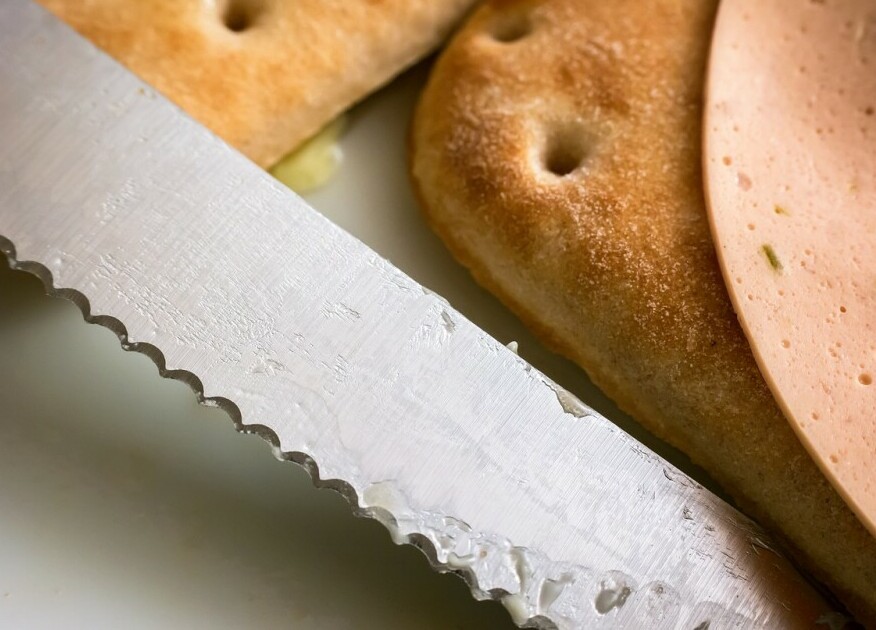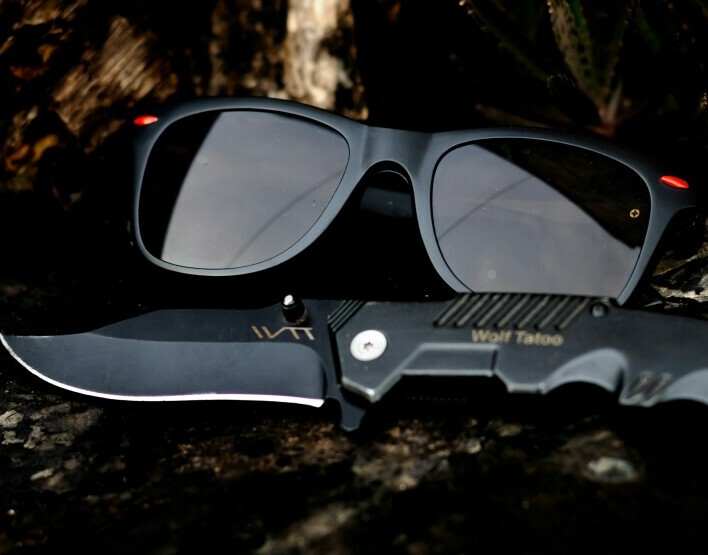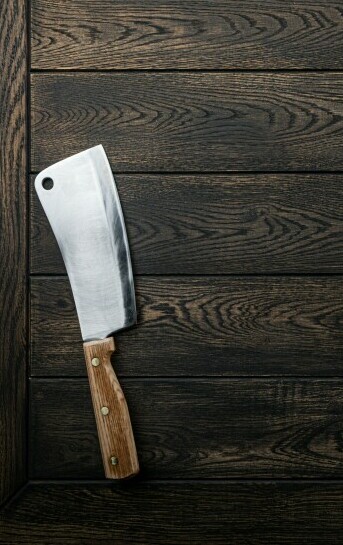I’m going to kick things off by stressing the unbeatable significance of having top-notch cutting tools in your kitchen. A set of reliable knives isn’t just about making clean cuts – it’s about efficiency, precision, and safety in all your cooking endeavors.
Chefs knife 
Choose something that resonates with you when it comes to a chef’s knife. It’s an all-around powerhouse, ideal for chopping, slicing, and mincing. Consider it your culinary sidekick, capable of tackling most tasks with ease.
Paring knife 
You’re going to find out about the unsung hero in kitchen cutlery – the paring knife. It might be small, but it packs a mighty punch for peeling fruits, deveining shrimp, or even hulling strawberries. It’s the detail-oriented partner that every chef needs.
Bread knife 
And let’s not forget about the bread knife. Sure, it’s a champ at slicing through crusty loaves without squishing them, but it’s also a pro at tackling soft foods like tomatoes. The serrated edge is a game-changer, providing a sawing motion that other knives just can’t match.
Now, as we move through this essential toolkit, you’ll notice that each knife serves a unique purpose. It’s not about cluttering your drawers with gadgets; it’s about choosing tools that make cooking approachable, enjoyable, and safe. And that’s going to include some specialized cutters that can enhance your culinary craft in ways you might not even expect.
Specialized Cutters: Enhancing Your Culinary Craft
Think of your kitchen as an artist’s studio and every dish you create as a masterpiece. Just as a painter has brushes for different strokes, a chef needs the right knives for specific tasks. That’s where specialized cutting tools come in; they’re game-changers that can significantly enhance your cooking capabilities.
Utility knife 
First up, let’s talk about the utility knife. It’s like the middle child between a chef’s knife and a paring knife. Handy for when you need more precision than a chef’s knife but something sturdier than a paring knife, the utility knife excels in slicing smaller fruits and vegetables, as well as trimming excess fat from meats.
Filet knives 
When it comes to seafood, filet knives will become your best friend. They have thin, flexible blades that make it easy to maneuver around bones and skin, ensuring you get the most out of your fish. The result? Beautifully prepared fillets that are ready for the frying pan or the oven.
Cleaver
For those who don’t shy away from big cuts of meat or tough vegetables like squash, a cleaver is your muscle in the kitchen. It has a hefty weight that enables you to chop through bone, cartilage, and thick rinds with minimal effort, making it a powerhouse tool for certain recipes.
Food scissors 
Don’t overlook food scissors, either. They go beyond fabric and paper – kitchen shears are handy for snipping herbs, slicing pizza, or cutting through poultry joints. And guess what? They are often easier to handle and clean than knives, making them a practical addition to your kitchen arsenal.
These specialized knives are there to serve specific purposes, and with them, you’ll notice a smoother, more efficient cooking process. Not only will your prep work be faster, but you’ll also maintain the integrity of your ingredients for more presentable, and potentially tastier, results.
Maintaining the Edge: Care and Upkeep of Kitchen Knives
You’ve invested in some top-notch cutting tools, and I’m going to explain why keeping them sharp and well-maintained is your ticket to culinary success. Dull knives aren’t just a nuisance; they can be dangerous, leading to more kitchen accidents. So, let’s focus on honing that edge.
When it comes to sharpening, you’ve got options. Whether you’re using a sharpening stone, a honing rod, or an electric sharpener, the key is consistent, regular maintenance. I’ll walk you through the benefits of each method and help you find what’s best for you.
Don’t overlook where you stash your knives. How you store your cutters can significantly affect their lifespan. Magnetic strips and knife blocks offer smart solutions to keep blades pristine, and I’ll share insights on choosing the right storage to fit your kitchen knives.
Cleaning knives
Cleaning your knives correctly is just as crucial as sharpening them. Discover the dos and don’ts to prevent wear and contamination. It’s not complicated, but there are certain no-nos like tossing your knives in the dishwasher that can wreak havoc on your blades.
Kitchen Cutlery Safety: A Cut Above the Rest
So, you’ve got your arsenal of cutting tools, and now I’m here to help you with how to use them safely. It’s one thing to have the right knife for the job, but knowing how to handle it? That’s a whole new ballgame.
Safe knife handling is non-negotiable. It’s not just about avoiding slips and cuts; it’s also about making sure each slice, chop, and dice is done with precision.
Choose something that resonates with you, but remember, not every knife is suitable for every task.
You’re going to want to match the tool to the task – that’s the golden rule for kitchen safety. This isn’t just about being overly cautious; it’s about efficiency and making your cooking experience as smooth as possible.
Teaching kids 
In my opinion, teaching kids about kitchen safety is valuable. If you’ve got little helpers, start them young. Teach them which knives are safe to use and monitor their technique.
Not only does it help build good habits early, but it also fosters a sense of responsibility and respect for the tools they use.
Remember, your first attempt at mastering knife skills doesn’t need to be perfect. You can always adjust your approach down the road. Just don’t focus too much on perfection that you forget about being safe. I really hope that you implement these safety practices; they’ll make your culinary journey much more enjoyable and, most importantly, safe.
Kathie






